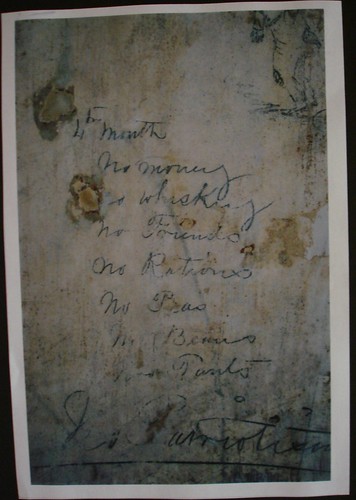New Year’s Eve madness is a modern-made celebration. Before the Scots popularized midnight debauchery, the New Year was soberly celebrated on the first morning of the year with respect and reflection. Then, someone went and invented public clocks, great clanking iron engines with enormous hanging bells to inform mankind of the precise passing of time. When clocks arrived in Scotland, the Scots promptly went into “party mode,” combining two peculiar Scottish customs, Hogmanay and First Footing. By the 1680s, New Year’s Eve was born. A century later Scotland’s beloved Rabbie Burns wrote "Auld Lang Syne," setting it to a raucous Scottish dance tune.The Scots contributed a wee bit of Scotch whiskey and soon all of civilization ended the dignified moderation and temporal respect they had formerly displayed when ushering in the New Year. The rest is history, or so say those who claim that the Scots invented Everything.
The Case Against the New Year from the Wall Street Journal
Thursday, December 31, 2009
Sunday, November 08, 2009
A Soldier's Lament
"NO PATRIOTISM"

This is one example of graffiti that occupying Union soldiers left upon the walls of Blenheim in Fairfax, Virginia during the War Between the States. This photograph is from the attic, however when wallpaper was recently removed from the main floors of the old Greek Revival farmhouse, graffiti was discovered everywhere. This "Soldier's Lament" records:
The image, Soldier Graffiti, was originally uploaded by Edna Barney. It is posted here from Barneykin's account.
account.
Visit Neddy's Archives for more of Edna's writings.

This is one example of graffiti that occupying Union soldiers left upon the walls of Blenheim in Fairfax, Virginia during the War Between the States. This photograph is from the attic, however when wallpaper was recently removed from the main floors of the old Greek Revival farmhouse, graffiti was discovered everywhere. This "Soldier's Lament" records:
4th Month"Blenheim," located at 3610 Old Lee Highway, Fairfax, Virginia, is a brick home built by REZEN WILLCOXON about 1858, to replace an earlier frame dwelling. This 12-acre former farm, includes a cemetery for several generations of the Willcoxon family who lived here. Blenheim is renown for its outstanding examples of Civil War soldier graffiti. It is currently being restored. The day we were there, a recent tropical storm had left many downed trees, but no damage to the structures.
No money
No whiskey
No Friends
No Rations
No Peas
No Beans
No Pants
No Patriotism (underlined)
The image, Soldier Graffiti, was originally uploaded by Edna Barney. It is posted here from Barneykin's
 account.
account.Visit Neddy's Archives for more of Edna's writings.
Monday, October 12, 2009
Happy Bjarne Day
Bjarne, America’s Discoverer 986AD
Most people have no idea that the first European to discover America was a Barney. They think it was Leif Erikson or Christopher Columbus. When Leif found the coast of America he was following Bjarne’s discoveries. Bjarne, a Norwegian Viking, found what is now New England in 986 AD. He went back to Greenland where his family was living and told his father, Harold, what he had seen. Harold was a member of Erik the Red’s sailing team. Erik the Red then ordered his son, Leif, to go and find the lands that Bjarne had described. The rest is history, and Christopher Columbus ended up getting the credit, as he had a great publicist. Leif came in second place, and Bjarne was forgotten.
Most people have no idea that the first European to discover America was a Barney. They think it was Leif Erikson or Christopher Columbus. When Leif found the coast of America he was following Bjarne’s discoveries. Bjarne, a Norwegian Viking, found what is now New England in 986 AD. He went back to Greenland where his family was living and told his father, Harold, what he had seen. Harold was a member of Erik the Red’s sailing team. Erik the Red then ordered his son, Leif, to go and find the lands that Bjarne had described. The rest is history, and Christopher Columbus ended up getting the credit, as he had a great publicist. Leif came in second place, and Bjarne was forgotten.
Subscribe to:
Posts (Atom)